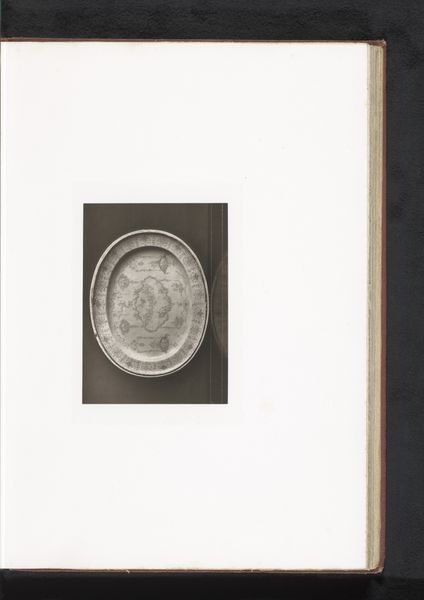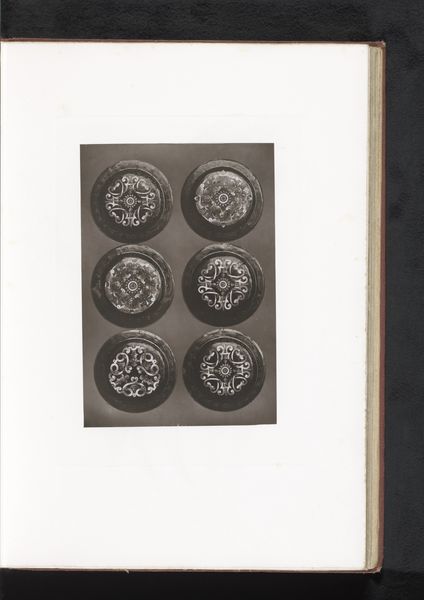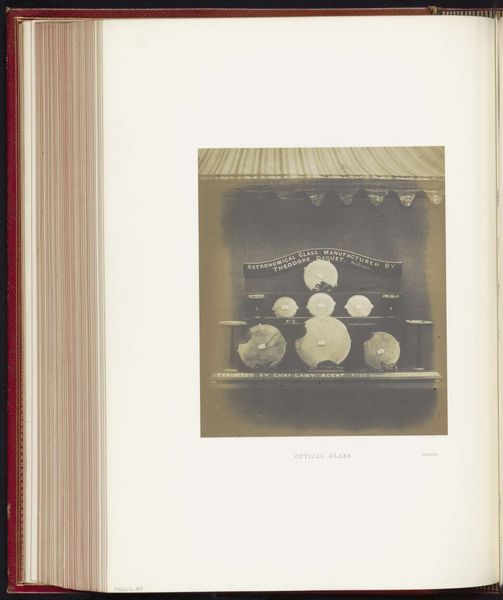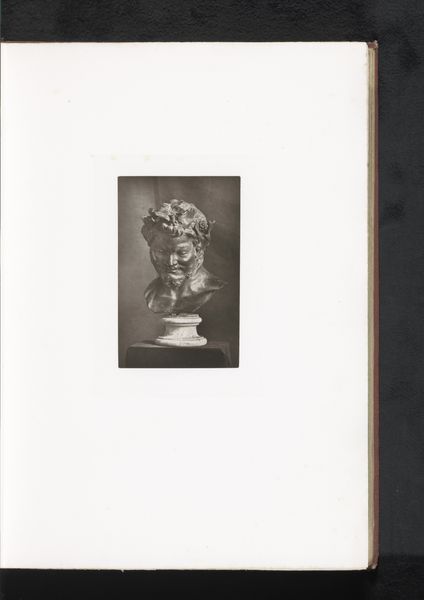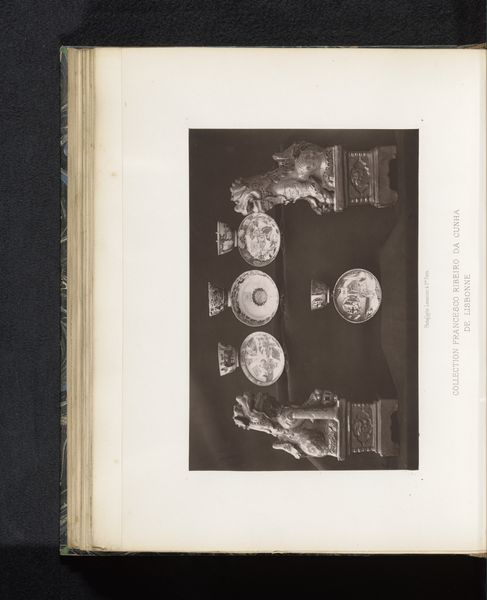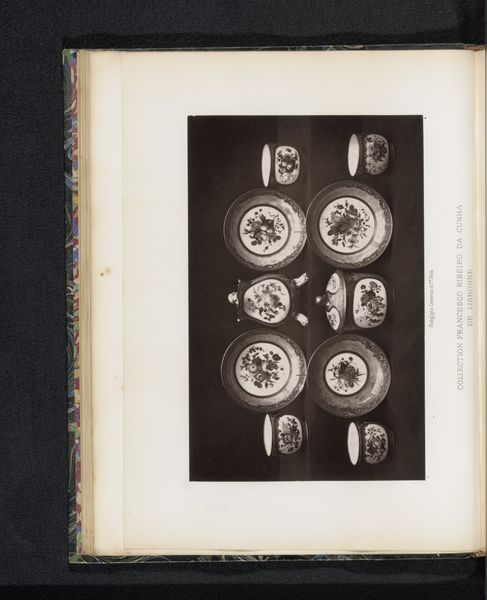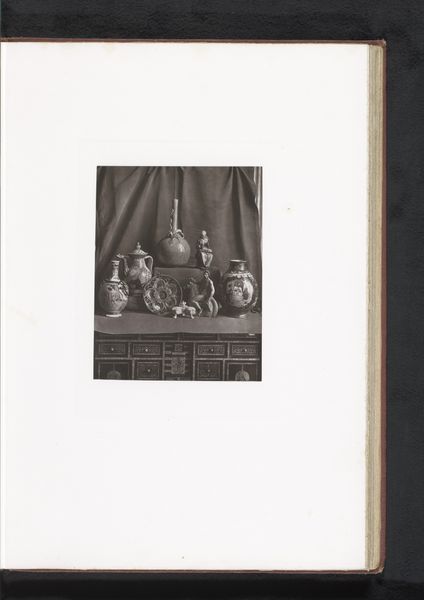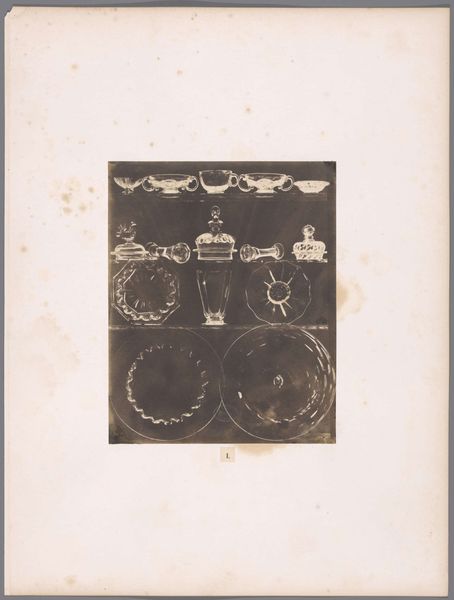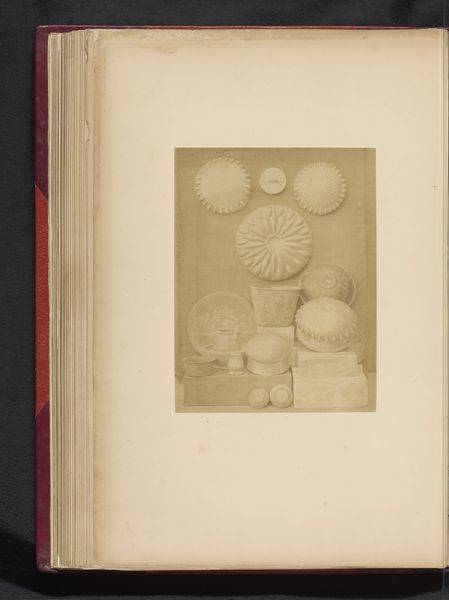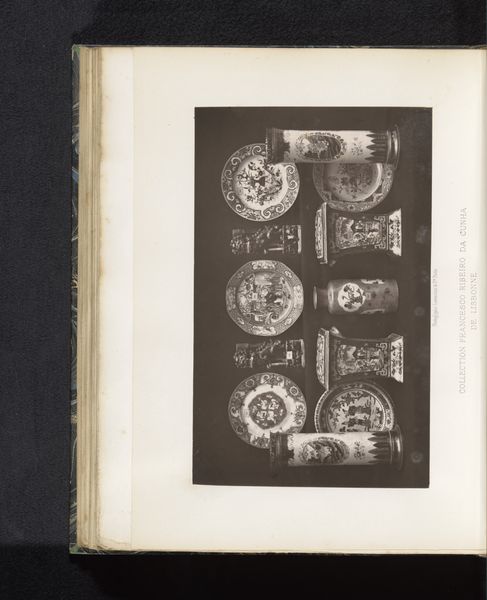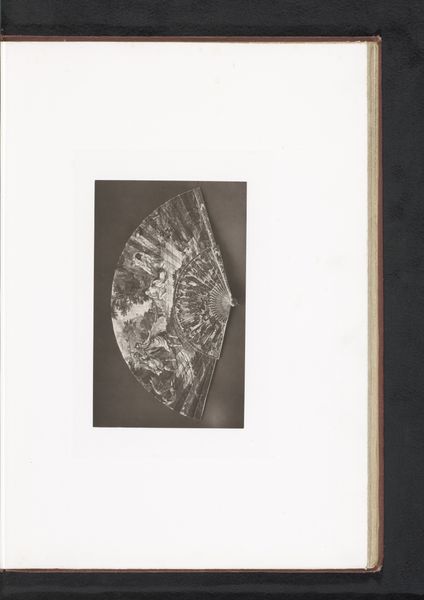
Vier gedecoreerde schalen van Italiaans aardewerk, opgesteld tijdens de Exposition Rétrospective van 1873 in Tours, Frankrijk 1873
0:00
0:00
print, ceramic, photography, earthenware
# print
#
ceramic
#
white palette
#
vase
#
photography
#
earthenware
#
decorative-art
Dimensions: height 197 mm, width 116 mm
Copyright: Rijks Museum: Open Domain
Curator: This photograph documents four decorated Italian earthenware plates exhibited in 1873 at the Exposition Rétrospective in Tours, France. It was taken by Gabriel Blaise. Editor: My first thought is, wow, there's such starkness. It’s a black and white photo, but still, you immediately get a sense of detail – you can sense the artistry of each plate, despite the monochrome. What draws you in? Curator: Well, understanding the context is key. It’s not just a pretty still life; it's a record of design. Think about the late 19th century – design was a marker of national pride and a demonstration of skill. Exhibitions like the one in Tours played a crucial role in circulating artistic ideas. Editor: Yes, absolutely. It makes me consider the original function of these plates. Were they purely decorative, signifying wealth and taste, or did they hold some other social significance within Italian culture? Curator: Likely both. These kinds of displays served to educate and influence design trends across Europe, emphasizing national identities but also, perhaps problematically, hierarchies of taste. These plates could very well carry certain traditional and conservative patriarchal messages from the Italian Risorgimento. Editor: True, these exhibitions become platforms, don't they? This makes me question, too, who this image was really for, what messages were being absorbed. It appears in some kind of album. So the photograph acts as a kind of archive in and of itself. Curator: Exactly! The image highlights a convergence of artistic movements and evolving tastes. The print makes tangible how design contributes to forming ideologies and the way photography freezes such cultural moment for reconsideration and investigation. Editor: Thinking about all these complexities has shifted my view considerably. These humble decorative plates have a far broader narrative of artistic movements and national identity, recorded here. Curator: Precisely. It's a valuable insight into understanding both the artistry of ceramics and the public function of exhibitions in shaping design culture during the period.
Comments
No comments
Be the first to comment and join the conversation on the ultimate creative platform.


